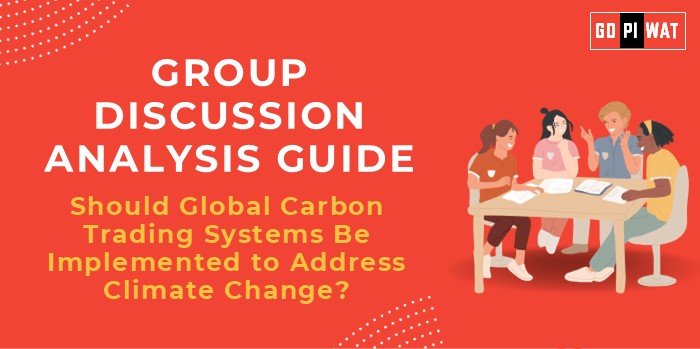📋 Group Discussion Analysis Guide: Should Global Carbon Trading Systems Be Implemented to Address Climate Change?
🌐 Introduction to Carbon Trading Systems
Opening Context: The urgency of addressing climate change has brought market-based solutions like global carbon trading systems into focus. With carbon markets valued at over $850 billion in 2022, their relevance in driving emissions reductions is undeniable.
Topic Background: Carbon trading systems, rooted in the Kyoto Protocol and reinforced by the Paris Agreement, aim to limit global carbon emissions by assigning a monetary value to carbon. The system enables countries and companies to trade emission allowances or credits, creating financial incentives for reducing greenhouse gases.
📊 Quick Facts and Key Statistics
- Carbon Market Size: $850 billion (2022) – Reflects growing adoption and economic significance.
- Top Emitters: China, USA, India – Emphasizes critical regions for carbon market inclusion.
- EU Emissions Trading System: Reduced emissions by 35% in participating sectors since 2005.
- Global CO2 Emissions (2022): 37 billion metric tons – Highlights the scale of the problem.
👥 Stakeholders and Their Roles
- Governments: Set regulations and cap limits; oversee compliance.
- Corporations: Adapt to emission limits; innovate in green technologies.
- International Bodies (UNFCCC, IPCC): Provide frameworks and guidelines.
- Non-Governmental Organizations (NGOs): Monitor and advocate for equity and transparency.
🏆 Achievements and Challenges
Achievements
- EU ETS Success: Reduced emissions significantly in key industries.
- Voluntary Carbon Markets: Enabled private sector participation in climate action.
- Innovation Driver: Sparked investment in renewable energy and carbon capture.
Challenges
- Market Manipulation: Speculation risks undermining environmental goals.
- Inequity Concerns: Developing nations may face disproportionate impacts.
- Limited Scope: Current systems cover only a fraction of global emissions.
🌍 Global Comparisons
- Successful Example: New Zealand’s ETS incorporates agriculture, enhancing sectoral coverage.
- Challenges in the USA: Federal carbon trading remains absent despite regional markets.
📋 Case Study
- India’s PAT Scheme: Energy efficiency improvements have saved 31 million tons of CO2 since 2012.
🗣️ Structured Arguments for Discussion
- Supporting Stance: “A global carbon trading system can ensure cost-effective emissions reductions and foster innovation.”
- Opposing Stance: “Carbon markets risk becoming profit-driven, neglecting the needs of developing nations.”
- Balanced Perspective: “While carbon trading has potential, it must be accompanied by robust regulations to ensure equity and effectiveness.”
🔑 Effective Discussion Approaches
- Opening Approaches:
- “Carbon trading markets were valued at $850 billion in 2022, yet emissions still rose globally…”
- “The EU’s ETS reduced emissions by 35%, demonstrating potential if scaled globally.”
- Counter-Argument Handling:
- “While carbon markets may lead to inequities, financial mechanisms like a Green Climate Fund can address disparities.”
📈 Strategic Analysis of Strengths and Weaknesses
- Strengths: Encourages innovation; market-driven efficiency.
- Weaknesses: Risk of manipulation; uneven global adoption.
- Opportunities: Expansion in developing nations; tech investments.
- Threats: Political resistance; potential for fraud.
🎓 Connecting with B-School Applications
- Real-World Applications: Sustainable finance strategies in corporate projects; policy evaluation for operational efficiency in carbon reduction.
- Sample Interview Questions:
- “How can global carbon markets be structured to include developing nations effectively?”
- “Discuss the role of carbon trading in achieving net-zero targets.”
- Insights for Students:
- Explore cap-and-trade policies for corporate projects.
- Analyze case studies to understand market dynamics.


